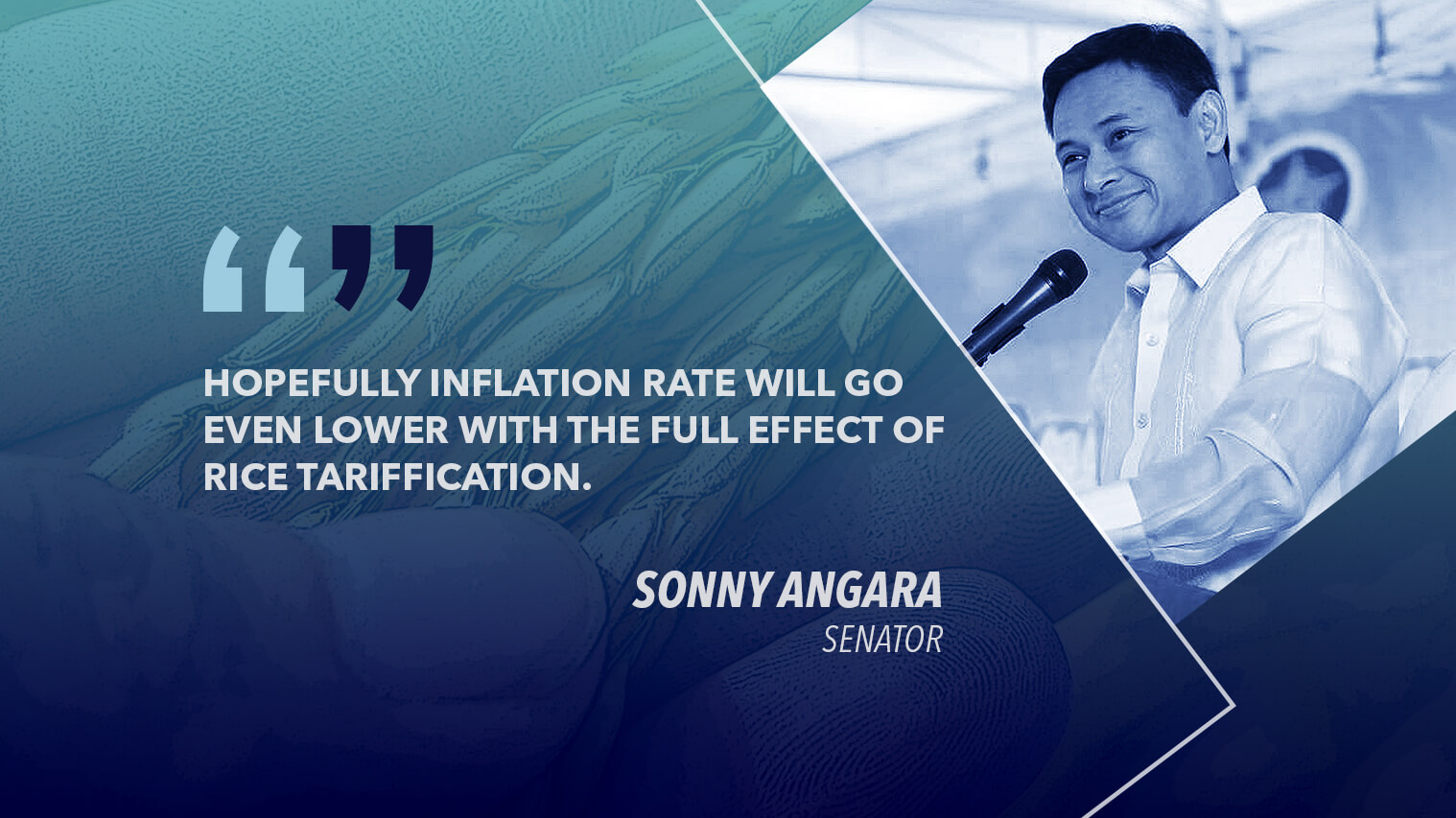The proposed rice tariffication law is projected to temper inflation in the coming months as it will bring down the prices of the staple grain, Senator Sonny Angara said.
Angara made the statement following the report of the Bangko Sentral ng Pilipinas (BSP) that year-on-year headline inflation moderated to an average of 5.9 percent in the fourth quarter of 2018 from the previous quarter’s average of 6.2 percent.
This brought the full-year average inflation rate to 5.2 percent, which is above the government’s target range of 3 percent ± 1.0 percentage point for the year.
“It’s still quite high, but thankfully lower than previous months, and hopefully will go even lower with the full effect of rice tariffication measure and other efforts to ensure against overpricing and profiteering,” the seasoned legislator said.
The rice tariffication bill has been transmitted to Malacañang for President Rodrigo Duterte’s signature. The President’s economic managers have identified rice tariffication as one of the means that would help address soaring inflation.
Economic managers have identified rice tariffication as one of the means that would help address soaring inflation.
Once enacted, quantitative restrictions (QR) on rice imports will be replaced by tariffs, opening the import of rice to private traders.
One of the main features of the bill is the creation of the Rice Competitiveness Enhancement Fund (RCEF) or the Rice Fund.
The Senate has agreed on setting the RCEF at a minimum of P10 billion a year for six years, and tariff revenues in excess of P10 billion shall be appropriated by Congress based on a menu of programs in the rice tariffication law.
The Senate agreed on setting the RCEF at a minimum of P10 billion a year for six years.”
The fund will be used to provide different forms of assistance to the country’s rice farmers, such as the development of inbred seeds and rice farm equipment, and skills enhancement.
According to the BSP’s quarterly report, food inflation moderated during the fourth quarter as supply conditions improved for key food items.
Meanwhile, non-food inflation also eased during the same quarter, as lower international oil prices exerted downward pressure on transport inflation through lower gasoline and diesel prices.
By contrast, core inflation rose to 4.9 percent in Q4 2018, higher than the rates posted in the previous quarter and a year ago.
Similarly, the Central Bank’s three alternative measures for core inflation were higher during the quarter, the BSP added in its report.


